#Perameles
Text
Perameles < Isoodon
Come at me bro
#Isoodon gang rise up#isoodon#perameles#short–nosed bandicoot#barred bandicoot#bandicoots#animals#mammals#australian mammals#marsupials#australian marsupials#shitpost
1 note
·
View note
Photo

Thank you Marilyn. And thank you Lauriston Gallery Penshurst! Posted @withregram • @marilyn_ella So sweet that it had to come home with me. @damonkowarsky ‘s Perameles or, an Australian pouched long-nosed Bandicoot one of our unique marsupials. So much to choose from @lauristonpress 🤗 #perameles #bandicoot #lauristonpress #penshurst #etching #intaglio #printmaking #marsupial #art https://www.instagram.com/p/Cn-Xjt9hNCM/?igshid=NGJjMDIxMWI=
0 notes
Text

little gift because i adore @perameles-coco i hope you enjoy it lil sis of mine ^^
(sorry just its wholesome YwY)
61 notes
·
View notes
Text

Hey, move along, it’s not for you.

Coco? I’ve got something for you, luv. May I open the door?
@perameles-coco
14 notes
·
View notes
Text
youtube
Crash Bandicoot 4 - Perameles Coco (Flashback Tape 12)
0 notes
Text
Loving Pokemon Violet so far!
Miraidon is purple, draconic-looking, probably part Dragon-type, and when you’re riding it on the overworld it controls almost exactly like Spyro from the original Spyro The Dragon trilogy, right down to gliding being activated by pressing ‘jump’ twice in a row!
Now they just need to add a spinny orange legendary based on Perameles gunnii, the Eastern Barred Bandicoot, and it’ll be perfect! XD
0 notes
Photo
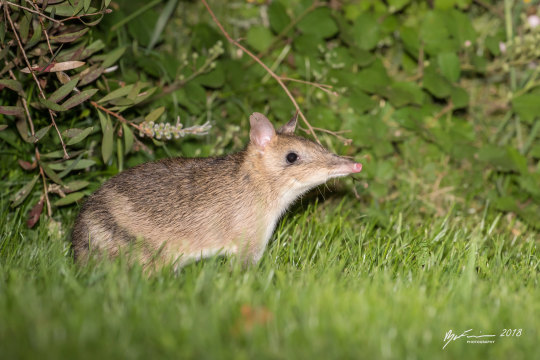
Eastern barred bandicoot (Perameles gunnii)
Photo by Ryan Francis
#eastern barred bandicoot#bandicoot#perameles gunnii#perameles#peramelinae#peramelidae#peramelemorphia#australidelphia#marsupialia#metatheria#mammalia#tetrapoda#vertebrata#chordata
115 notes
·
View notes
Text

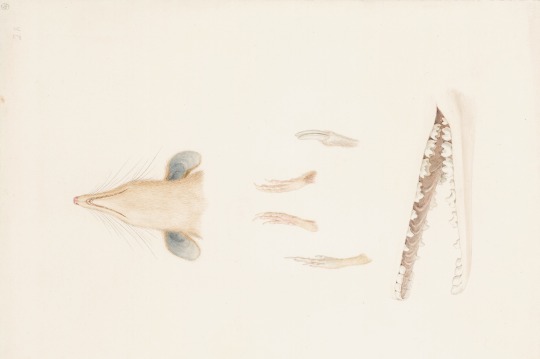
Western Barred Bandicoot, Perameles bougainville (1801) - Ferdinand Bauer
#Wonder Rooms#Cabinet of Curiosities#Public Domain#19th Century#Natural History#Scientific Illustration#Ferdinand Bauer#Zoology#Animalia#Mammalia#Marsupialia#Peramelemorphia#Peramelidae#Perameles
8 notes
·
View notes
Photo

The desert bandicoot (Perameles eremiana) once lived in central Australia. The last known specimen was collected in 1943, and it is now presumed extinct. Invasive species and habitat destruction are believed to have contributed to its extinction.
The specimen pictured is the holotype: a male preserved in 70% ethanol. It was likely collected in the late 1800s. [x]
112 notes
·
View notes
Photo

Eastern barred bandicoot (Perameles gunnii)
The eastern barred bandicoot is a small, rabbit-sized marsupial native to Tasmania and Victoria, southeastern Australia. The eastern barred bandicoot weighs less than 2 kg and has a short tail and three to four whitish bars across the rump The Eastern barred bandicoot has two separated populations, one on the mainland of Australia and one on the island of Tasmania.
photo credits: JJ Harrison
#eastern barred bandicoot#Perameles gunnii#zoology#biology#biodiversity#science#wildlife#nature#animals#cool critters
171 notes
·
View notes
Text
Humph. Some description, Nancy.

“Blonde mutant” like that’s not half of the creatures on this Gorn-Forsaken planet.
@perameles-coco
18 notes
·
View notes
Text

@frankieneedsmeds they are! Bandicoots are marsupials (they have young in pouches like kangaroos), and they're in a taxonomic order called Peramelemorphia. This order also includes bilbies!

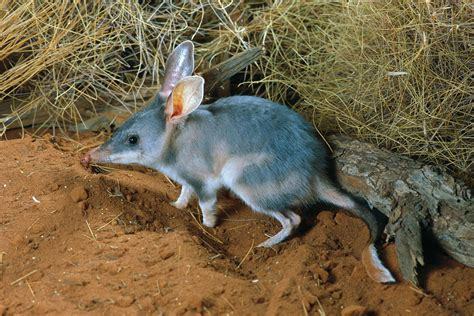
Baby golden bandicoots (left) and a bilby (right).
The one in my post is a golden bandicoot (Isoodon auratus). They're part of a genus (group of species) called Isoodon, or short-nosed bandicoots.

Isoodon obesulus, a Southern Brown Bandicoot.
There's also at least two other Isoodon species, the Southern Brown Bandicoot Isoodon obesulus and Northern Brown Bandicoot Isoodon macrourus, although there could be more. I'm doing a project to try and figure that out.
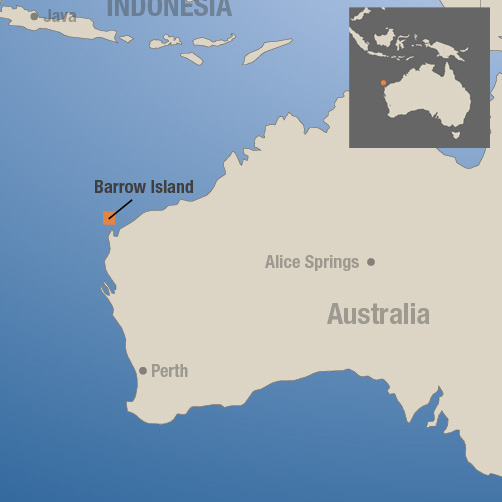

A map of Barrow Island and one of the island's bandicoots
There's a subspecies of these called Barrow Island bandicoots which live on (you guessed it) Barrow Island, off the coast of Western Australia. These are what my post mentioned.

Also if you're wondering there's another genus Perameles, or barred bandicoots, which are what Crash Bandicoot is actually based on!
16 notes
·
View notes
Photo

Huge thanks to @marilyn_ella for finding ‘Perameles’ a new home. It’s always wonderful to see where work goes. Love the colour insert on the framing! 😍😍😍And thank you as always to @sarahgabrielartist who has created amazing and inspiring gallery spaces at @lauristonpress Kyneton and Penshurst. Posted @withregram • @marilyn_ella So happy with my framed @damonkowarsky bandicoot. Note detail of colour coordinated mount and frame by @ellawebb__ of @hennastframers #penshurst #kyneton #art #printmaking #intaglio #perameles #bandicoot #countryvictoria https://www.instagram.com/p/CWTvdB1B6Gy/?utm_medium=tumblr
0 notes
Note
Do you have a favourite extinct animal?
This is mine: The Butterfly Bandicoot (Perameles papillon)

If you would like to know at what speed my neurons are firing I almost said platypus- but they are in fact not extinct.
Back to the actual question I like Stellar’s Sea Cows

I’m bored send me asks
1 note
·
View note
Photo

Bandicoot
Perameles gunnii
This is a drawing of the eastern barred banicoot.The banicoot is a marsupial meaning that it carries its young in a flesh pouch in its stomach, this of which is actually backwards facing unlike the well known kangaroo and other marsupials, but still have strong hind legs but are rabbit sized.
The second and third toes are fused together of the back hind legs, reduced to being used for only grooming purposes.
The bandicoot has marsupial bones on the pelvis (used to suport the weight of the young) and also has split phalanges (claws or nails) which can only otherwise be seen in other animals that dig and burrow.
Crash Banicoot was a well known video game character and he did so well at highlighting the species that scientists named a fossil of a unknown species in his name.
I chose the Bandicoot, even though they are not the highest on the Cites list and are of least concern, I wanted to draw it as it is a very interesting creature and needs more awareness especially with all the bush fires that have been happening in Australia.I had trouble finding References for this drawing I was lucky to be able to talk to JackDAshby (Twitter) who helped me find some more references from the grant museum.
3 notes
·
View notes
Text
Multiple new cryptic species of bilby, and a case of mistaken identity among bandicoots leading to an accidental introduction:
Even after the catastrophic debacle of introducing non-native cane toads, European rabbits, foxes, dromedary camels, feral cats, and invasive invertebrates, Australian settler institutions are cursed with mistakes which unleash invasive animals even when attempting the well-meaning reintroduction of native species.
Some new research from 2018 revealed an alarming mistake in ecological management. Basically, you’ve got this cute little bilby from the remote far western coast near Shark Bay which was transported by scientists thousands of kilometers and now has a big strong population just chilling near Adelaide. Bilbies, or bandicoots, are understood to be important to maintaining healthy soils, especially in Mediterranean chaparral zone and the other climatically mild and temperate regions of the coast of southern Australia (ranging between Perth through Adelaide to the Melbourne area, and including Tasmania), so there is popular celebration of the reintroduction of bandicoots to environments which they historically inhabited before European agriculture and invasive species led to local extinction of many bandicoots. The western barred bandicoot (Perameles bougainville) went extinct across almost all of its range and disappeared from native habitats on the mainland after European invasion, but a few populations survived on extremely remote islands off the coast of Shark Bay in on the far western coast of Western Australia. Intending to help rehabilitate native soils and plant communities, Australian settler ecologists then took some bandicoots from Shark Bay islands and “reintroduced” the western barred bandicoot over 3000 kilometers away at the Arid Recovery Reserve, near Lake Torrens area north of Adelaide. This was done because settler scientists thought that this bandicoot species had historically lived across much of southern Australia. Uh oh: It turns out that this western barred bandicoot lineage was historically only native to a small portion of the western coast of Australia near Shark Bay far, far away and was never native to the Adelaide or Lake Torrens area, because what was assumed to be the “western barred bandicoot” was actually 5 different cryptic species. 4 of these species are now extinct. The only living member of this bandicoot lineage remains only at Shark Bay. But now, these Shark Bay bandicoots are living north of Adelaide, where a couple thousand of them live at Arid Recovery Reserve.

A western barred bandicoot from the coastal Western Australia population at the islands of Bernier and Dorre:

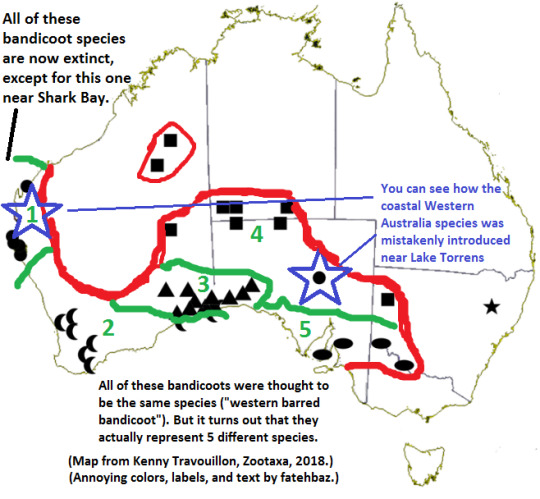
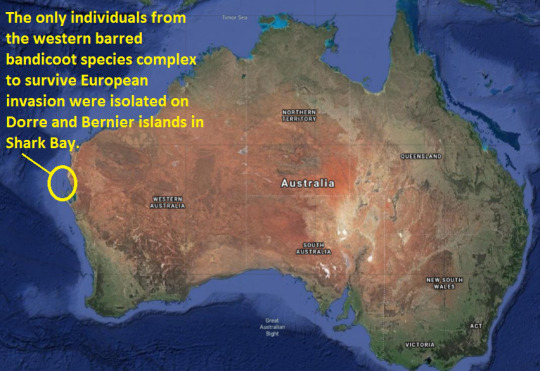
Kenny Travouillon, the lead researcher who reported the cryptic species and new understanding of bandicoot biodiversity, was featured recently in this report from Western Australian Museum, February 2018:

“For example, many people will have seen the Quenda (Isoodon obesulus fusciventer), a bandicoot familiar to Perth backyards. For more than 150 years the Quenda had been thought to be a subspecies of the Southern Brown Bandicoot (Isoodon obesulus) from the east coast of Australia, when in fact our research shows that it is a distinct species and more closely related to the Golden Bandicoot (Isoodon auratus) endemic to WA and found on Barrow Island and throughout the Kimberley.”
“We also re-evaluated the Western Barred Bandicoot (Perameles bougainville), a species now only found on islands near Shark Bay, and we found that it is in fact a complex of five distinct species. Four of these species had been named in the 1800s, but we described a new species from the Nullarbor region, the Butterfly Bandicoot or Nullarbor Barred Bandicoot (Perameles papillon). This is a new species that went extinct between 1920 and 1960, as a result of feral carnivores spreading west,” he said.
Four of the eight bandicoots that once lived in in WA are now extinct: the Pig-footed Bandicoot (Chaeropus ecaudatus), the Desert Bandicoot (Perameles eremiana), the Marl Bandicoot (Perameles myosuros) and the Butterfly Bandicoot (Perameles papillon). The four that remain are the Quenda (Isoodon fusciventer, previously known as the Southern Brown Bandicoot), Northern Brown Bandicoot (Isoodon macrourus), Golden Bandicoot (Isoodon auratus), and the Little Marl (Perameles bougainville), which was previously known as the Western Barred Bandicoot. [End of excerpt.]
Here’s a story on how the confusion has resulted in a non-native bandicoot species being reintroduced where it didn’t belong:


An endangered Australian bandicoot that was reintroduced to the Australian mainland is now believed to be one of five distinct species, and researchers say it may have been a mistake to introduce it to South Australia.
Scientists working for the Western Australian Museum have published research that concludes that what has been known as the western barred bandicoot is in fact five distinct species – four of which had become extinct by the 1940s as a result of agriculture and introduced predators. The species were closely related but occurred in different parts of Australia.
In the 2000s, western barred bandicoots that had survived on the arid Bernier and Dorre islands off Western Australia were reintroduced to the mainland, including to a predator-proof reserve in outback South Australia. But the new study shows the surviving species that was translocated to that part of the country would never have occurred there previously. Lead researcher Dr Kenny Travouillon made the findings after analysing skulls and DNA from tissue from specimens held in collections in Paris and London.He said the research, which was published in Zootaxa, came to the conclusion that the western barred bandicoot was the only remaining species of the five.
The species that has been reintroduced around Australia would have originally occurred only in parts of Western Australia. “On the mainland, that species should have only been in WA along the coast from Shark Bay to Onslow,” he said. “They should never have been brought to South Australia, but that decision was made from the old research.” Dr Kath Tuft, the general manager of the Arid Recovery Reserve in South Australia, said there were now as many as 2,000 western barred bandicoots at the reserve. She said what had been considered a reintroduction of the species was now technically an introduction. [End of excerpt.]
-----
Important distinction: There is another celebrated - and more successful - bandicoot reintroduction project involving a different species.
The eastern barred bandicoot (Perameles gunnii) lives on Tasmania and on the mainland in southern Victoria near Melbourne. The population that once inhabited mainland ecosystems almost went entirely extinct, but there are multiple successful reintroduction sites in Victoria and a captive breeding program.
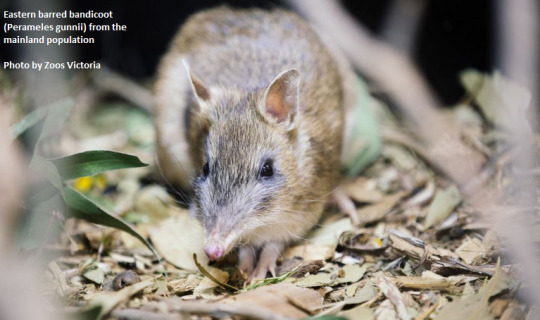
The species also lives on Tasmania, but here are the reintroduction sites on the mainland near Melbourne [map from the species recovery plan, State Government Victoria]:
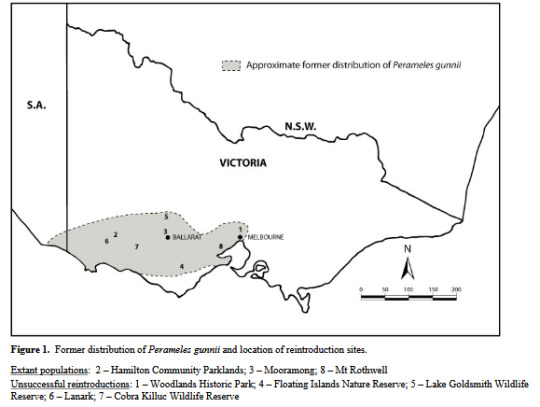
This bandicoot species does belong in mainland southern Australia.
11 notes
·
View notes